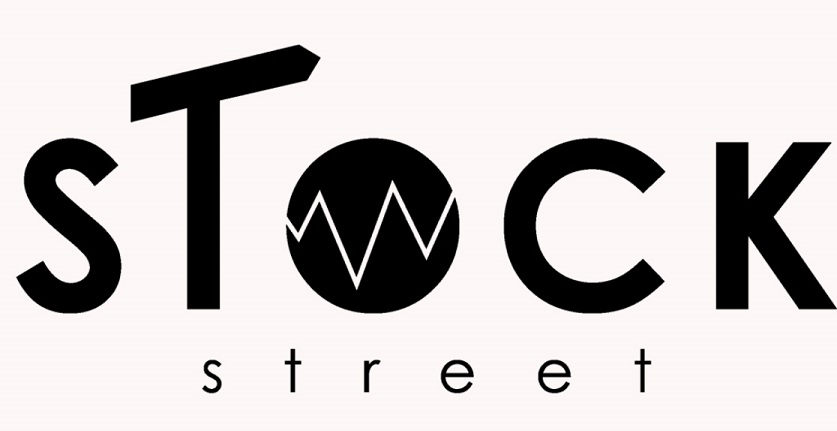Wealthfront Review
- Fees
- Investment Options
- Account Options
- Tools & Features
- Account Minimum
Good to know
Wealthfront is a top-tier robo-advisor and has been a high-quality robo-advisor for years. Betterment and Wealthfront have been competing directly for a long time since they offer very similar technology and passive investing formulas.
Wealthfront charges a flat 0.25% management fee, and there are fees on underlying ETFs as well.
If you are looking for a socially responsible investment option, Wealthfront lacks in this aspect and you will find better options with its competitors.
Wealthfront offers a refer a friend promotion -both you and your friend can invest with no management fee on $5,000 when your referral signs up.
-
INVEST WITH WEALTHFRONTWhen it comes to robo-advising, there are generally two top-of-mind companies.
One of those companies is, Betterment
The other is, Wealthfront.
Betterment and Wealthfront have been battling it out for the longest period of time because they were two of the original mainstream robo-advisors.
Wealthfront is a product of silicon valley, while Betterment is a product of a financial advisor developer team.
Over the years, many other robo-advisors have come to market and are now directly competing with Wealthfront and Betterment.
How does Welathfront compete against Betterment and other robo-advisors that have launched over the past few years?
Is Wealthfront your best robo-advisor choice?
Find out with this in-depth Wealthfront review.
Wealthfront Features
WEALTHFRONT | |
|---|---|
| Rating | 4.5 |
| Management Fee | 0.25% |
| ETF Expense Ratios | |
| Account Minimum | $500 |
| Algorithm Based Portfolio | |
| Investment Options | |
| Account Options | |
| Technology | |
| Lending | |
| Socially Responsible Investing | YES BUT INADEQUATE |
| Promotions | Refer a friend and both you and your friend can invest with no management fee on $5,000. |
| Wealthfront Phone Support | 844-995-8437 |
| Wealthfront Address | 900 Middlefield Rd. Redwood City, CA 94063 |
| INVEST WITH WEALTHFRONT |
*Wealthfront says it offers socially responsible investing. Really, what it offers is the ability for you to omit companies you don’t agree with and some sectors. Also, you must have a 100k minimum for this. I view this not as Wealthfront helping you with a socially responsible portfolio. Rather, they gave you some flexibility, so you can do the work and figure out what companies you believe are socially responsible. Two robo-advisors doing much better than Wealthfront with SRI are: Swell Investing and Wealthsimple
About Wealthfront’s fees and features
- Management Fees – 0.25%
- ETF Fees – Yes. Fees are charged on underlying ETFs.
- Asset allocation – Allocates money based on risk tolerance investment algorithm.
- Goal-based investing – Wealthfront offers Path to help with investment and money/life goals.
- Wealthfront Investment options – Investments available through Wealthfront include:
- Stock ETFs
- Bond ETFs
- Individual stock portfolio if you have the Stock-level Tax-Loss Harvesting.
- Stock mutual funds
- Bond mutual funds
- Real estate investment trusts
- Wealthfront options – Accounts available including:
- Taxable account
- Traditional IRA
- Roth IRA
- SEP IRA
- 529 Plan
- Lending – Wealthfront is among a few robo-advisors offering lending services to its customers. If you have an account with $100,000 or more, you can borrow up to 30% against your portfolio.
- Minimum investment – $500
- Promotional offers – Refer a friend and both you and your friend can invest with no management fee on $5,000.
Positives of Wealthfront
- Fees– The management fee for Wealthfront is in the average range of robo-advisors. It’s main competitor, Betterment, has the same fee structure for less than 100k, but a higher fee for over 100k. Other robo-advisors, such as M1 Finance and Charles Schwab, have no management fee and are considered the lowest fee robo-advisors. Also, each ETF has its own fee, which is normal practice for robo-advisors.
- Account minimum – The account minimum for Wealthfront is $500. This is a little higher than some of its competitors which have a fee of $0 – $100. However, a $500 minimum is a still an adequate minimum amount, especially when compared to robo-advisors such as Charles Schwab and TD Ameritrade, which have a $5,000 minimum.
- Algorithm-based passive investing – Before opening a Wealthfront account, you will answer a series of questions about yourself and your investment goals/risks. You will then be shown an investment plan detailing how Wealthfront would invest your money. This plan will be based on the questions you answered and Welathfront’s algorithm. You won’t need to do much else if you don’t want to – you can just have the money added to the account and automatically invested.
- Promotional offer – If you are able to refer a friend to Wealthfront, you and your friend will both be able to invest your first $5,000 with no management fee. Many robo-advisors have promotional offers for clients. Some companies offer cash for referrals, while others offer a discount for referrals. Wealthfront’s offer is a positive for the robo-advisor.
- Rebalancing – Rebalancing is a standard integration with almost all robo-advisors and Wealthfront is no different. It allows you and the robo-advisors to keep your investments allocations at their preferred percentages. It helps prevent your portfolio drifting into an unwanted allocation mix.
- Tax loss harvesting (TLH)– Tax loss harvesting is an important factor for many robo-advisors. It helps create a more efficient tax structure for a taxable brokerage account. They do this by selling some ETFs at a loss and selling other ETFs with gains. The losses can be written off against the gains for a more efficient taxation.
- Stock-level Tax Loss Harvesting – This option is available for those with more than 100k with Wealthfront. Instead of selling ETFs to create a better tax structure, Wealthfront makes the ETFs by purchasing the individual stocks. Because Wealthfront can create an ETF out of stocks, it allows more options for selling individual stocks at losses to write-off against gains.
- Smart beta – Smart Beta is an investment style that invests in allocations weighted by certain factors. Perhaps the main positive of Smart Beta is its ability to lower ETF fees if you have 500K or more.
- Wealthfront Path – This is a feature allowing you to create a goal-based investment plan. You can link external accounts – everything from your savings accounts to your credit cards. Wealthfront Path will show your spending habits, how much you need to save, if you are on target with your investment goals, among other goals.
Negatives of Wealthfront
- Socially Responsible Investing – Wealthfront says it offers socially responsible investing, but what it offers is an ability for you to tell them which companies you don’t wish to invest in. They do not create a socially responsible investment portfolio for you based on their research – it’s your responsibility to omit companies you don’t wish to invest in. Also, this is only available for accounts with at least 100K.
- No access to advisors – Not everyone is interested in access to financial professionals. If this is something you care about, Wealthfront won’t have that option for you. A company like Betterment or Wealthsimple will have been better for this category.
- No Factional Shares – Some robo-advisors utilize an integration that allows the company to buy fractions of ETFs. This helps robo-advisors keep all of your money invested if you fall under the price of ETFs. For example, if a hypothetical price of an ETF called XYZ was selling at $100 and only $75 was in your account for that allocation, you wouldn’t have enough to invest that $75. A company using fractional shares could buy .75 shares and keep that portion of your money invested.
- No do-it-yourself options – Wealthfront uses a set-it-and-forget-it model and, for this reason, there are no tools for active investors. Although, there is the ability to remove certain company stocks from the individual stock tax loss harvesting option. That is about as advanced as it gets in terms of do-it-yourself options. In the end, Wealthfront is a passive robo-advisor and if you are looking for active options, Wealthfront likely isn’t for you.
Wealthfront Competitors
Below is a comparison of Wealthfront vs. Betterment and Wealthfront vs. M1 Finance.
WEALTHFRONT | BETTERMENT | M1 FINANCE | |
|---|---|---|---|
| Rating | 4.5 | 4.5 | 4.6 |
| Management Fee | 0.25% | 0.25% - 0.40% | 0% |
| ETF Expense Ratios | |||
| Account Minimum | $500 | $0 | $100 |
| Algorithm Based Portfolio | NO | ||
| Investment Options | |||
| Account Options | |||
| Technology | |||
| Lending | NO | ||
| Socially Responsible Investing | YES BUT INADEQUATE | YES BUT INADEQUATE | |
| Promotions | Refer a friend and both you and your friend can invest with no management fee on $5,000. | Refer a friend get 1 month free. Your friend will get 3 months free. Refer 3 friends get 1 year free. | Refer a friend & both get $10. |
| BETTERMENT REVIEW | M1 FINANCE REVIEW | ||
| INVEST WITH WEALTHFRONT | INVEST WITH BETTERMENT | INVEST FOR FREE WITH M1 FINANCE |
How does Wealthfront work?
Wealthfront is a passive robo-advisor that uses a risk tolerance questionnaire combined with an algorithm to invest your money.
When you start with Wealthfront, you will proceed through a set of questions as you can see above. The first set of questions is about yourself and your investment goals.
Next, you will go through a set of questions about your investment risk tolerance as you can see above.
Once you finish the set of questions, you will proceed to a screen similar to the one above. It will give you your risk score and the recommended exposure to specific asset classes.
 You will even have the option of receiving an email with your findings.
You will even have the option of receiving an email with your findings.
Once you finish these steps, you can open an account.
Wealthfront Path
Path is a tool available in Wealthfront to help you better understand your financial picture and goals. You can link external accounts from savings and checking to credit cards and other investment accounts. Path will allow you to create a snapshot of current spending habits and projected life goals based on those spending habits. It will help you answer important financial questions like how much you should save today, how much you will be worth in the future, and if you need to spend less/save more.
Wealthfront Tax-Loss Harvesting
All customers receive tax loss harvesting (TLH) technology for their taxable brokerage accounts. If you own an IRA with Wealthfront and not a brokerage account, this isn’t something you will care about (since TLH is for taxable accounts). TLH sells underperforming positions at losses to wash the taxes paid on the positions with gains. This can lower your tax bill, and, hence, increase your portfolio value.
Socially Responsible Investing
According to Wealthfront, they offer the ability to invest in a socially responsible manner if you have over 100k. However, this is very misleading. Wealthfront does not offer an algorithm based investment option for socially responsible investing. They only allow those with the advanced stock tax loss harvesting plan to pick and choose what stocks you want to remove from your portfolio. This is not a socially responsible investment portfolio – it is a portfolio that you can make socially responsible if you want to do the research and remove certain stocks. Two robo-advisors offering an actual socially responsible investment platform include Wealthsimple and Swell Investing.
CLICK TO BECOME AN IMPACT INVESTOR
INVEST WITH WEALTHSIMPLE
Wealthfront PassivePlus Suite
Wealthfront has created a suite of products under their Passive Plus category. Passive Plus attempts to leverage Wealthfront’s tax-loss harvesting and software-based investing features. Some of these features include, Stock-Level Tax-Loss Harvesting, Wealthfront Smart Beta, and Wealthfront Risk Parity
Wealthfront Stock-level Tax-loss Harvesting
Wealthfront’s Stock-level Tax-loss Harvesting portfolio makes tax loss harvesting (TLH) more efficient and can save additional money via taxes. This is only available for accounts with at least 100k that are taxable accounts; it is not for IRAs , Roth IRAs, and SEP IRAs. Many robo-advisors invest in ETFs -when an ETF has a loss, it can be sold to offset the taxation of another ETF that has a taxable gain. Instead of using the ETF as a whole, Wealthfront buys the individual stocks in an ETF. This allows Wealthfront to buy and sell stocks as they incur losses to offset gains in the individual stocks.
Wealthfront Smart Beta
Welathfront has two Smart Beta options.
The Smart Beta 500 is for accounts with $500 K – $1 million.
The Smart Beta 1000 is for accounts with $1 million and over.
Smart beta sounds cool and is a bit of a hot trend these days. I don’t want to knock smart beta.
However….
It is my opinion that Wealthfront’s Smart Beta (along with other Smart Beta platforms, such as Betterment’s) are great for marketing, but not guaranteed to increase your investment returns.
In fact…
It is entirely possible the Smart Beta portfolio underperforms the broad market.
While I see Wealthfront’s Smart Beta as probably better for marketing than it is for potential returns, it does have a very nice benefit…
A lower expense ratio.
Both the Smart Beta 500 and the Smart Beta 1000 have a lower expense ratios thanks to the purchasing of individual stocks. This can help the overall cost of your portfolio and is likely a better positive than the actual investment returns of the Smart Beta platform.
Wealthfront Risk Parity
Wealthfront recently launched its risk parity option and considers this to be a better asset allocation strategy that can help returns in different investment environments. In a very general sense, Wealthfront’s Risk Parity strategy will attempt to invest in less volatile allocations. The company will then use leverage to increase the returns of these allocations of lower volatility. This strategy is available to those with more than $100,000.
Above you will see that the vast majority of the risk (volatility) of the portfolio comes from stocks, even though 40% of the portfolio is in bonds.
Risk Parity tries to even this risk, as you can see below.
In order to even these risks, the portfolio will use leverage and invest in lower volatility investments.
Wealthfront review conclusion
Who is Wealthfront good for?
- Passive investors – If you are a passive investor looking for a set-it-and-forget-it type of investment, Wealthfront can be for you.
- Investors with taxable accounts – If you have a taxable account, Wealthfront will work well for you thanks to their advanced tax-loss harvesting.
- College planning investors – If you are interested in a robo-advisor that also has a 529 college savings account option, Wealthfront has this option for you.
- Those interested in planning software – Wealthfront Path offers a great platform that links to your external accounts and will help you better understand your financial path.
Who is Wealthfront not good for?
- Socially responsible investors – Unfortunately, Wealthfront falls very short on its socially responsible options.
- Investors who want control – If you want to pick and choose your allocations, funds, or even individual stocks, Wealthfront’s algorithmic based investment solution won’t be for you.
- Investors who want a human touch – For those investors who want access to an actual human will not like Wealthfront’s robotic platform. Unlike Betterment, Wealthfront does not include options for interacting with financial professionals.
My opinion on Wealthfront
Like all robo-advisors, Wealthfront has some big positives and some negatives as well.
For anyone looking for a passive form of investing with advanced tax loss harvesting and sleek software, Wealthfront is a nice bet.
Also, I love that they offer 529 plans for college savings. This is an area that many robo-advisors are lacking.
When it comes to the PassivePlus suite from Wealthfront, I want you to keep in mind as an investor, that algorithm based investing that tries to outperform via software is often better for the company than you as an investor.
When it comes to tax loss harvesting (TLH) and improving the TLH abilities, the Wealthfront PassivePlus suite has some great features.
However, when it comes to using an algorithm to be “smarter” than the market, it drifts away from the very thing you are doing… which is passive investing.
The entire point of passive investing is the idea that the fund companies can’t beat the market. In this sense, Wealthfront is doing exactly what the fund companies are trying to do, which is beat the market.
These features are very marketable and sell well to us as consumers, but will more than likely under-deliver over long periods of times.
That being said…
Decreasing the tax you will pay via advanced tax loss harvesting can really help. Using a software based algorithm to try and beat the market…not so much.
I find Wealthfront to be a top-tier robo-advisor and a strong option for many investors.
INVEST WITH WEALTHFRONT
Disclaimer: These are the ideas and opinions of the author. The author is not responsible for the actions of those who read the posts on this blog. Each individual reader has a unique situation and unique needs. This blog is not intended to solve those unique situations of the readers. This blog is not liable for decisions made by the readers of this blog.
Did I provide value? I hope so, and I want you to know this article includes affiliate links. Hopefully, I created enough value and you want to support me – here is my affiliate link disclaimer for full transparency DISCLAIMER























